
Ford, a major automotive manufacturer, has recently announced a significant recall affecting nearly half a million of its popular SUV models. This widespread alert addresses a serious safety concern involving potential brake fluid leaks in certain Ford Edge and Lincoln MKX vehicles. The issue, which stems from a rupturing rear brake hose, poses a direct risk to driver safety by potentially increasing stopping distances and, consequently, the likelihood of a crash.
This recall is not merely a technical inconvenience; it is a critical safety matter that demands immediate attention from affected owners. An increase in the distance required for a vehicle to come to a complete stop can have severe implications, particularly in emergency braking situations. The National Highway Traffic Safety Administration (NHTSA) and Ford have both emphasized the potential dangers associated with this defect, underscoring the importance of understanding the risks and the forthcoming steps.
As a responsible consumer, staying informed about such safety notices is paramount. This in-depth article aims to provide a comprehensive, factual, and unbiased overview of this Ford recall, drawing exclusively from official statements and reports. We will detail the affected vehicles, explain the nature of the defect, outline the crucial warning signs drivers should look for, and clarify Ford’s planned timeline for notification and resolution. Our goal is to empower vehicle owners with the necessary information to protect themselves and make informed decisions.

1. **The Primary Recall: Ford Edge and Lincoln MKX Brake Fluid Leak**
Ford is currently in the process of recalling approximately 500,000 vehicles due to a critical issue that could lead to brake fluid leakage. This recall specifically targets certain Ford Edge and Lincoln MKX models, which have been identified as having a defect within their rear brake system. The National Highway Traffic Safety Administration (NHTSA) has highlighted this concern, emphasizing the serious safety implications for vehicle occupants and other road users.
According to recall documents, a hose within the cars’ rear brake system has the potential to rupture, leading to a significant loss of brake fluid. This defect primarily affects 2016-2018 Lincoln MKX midsize luxury SUVs and 2015-2018 Edge SUVs. While some reports mention approximately 500,000 vehicles, other official sources cite a figure of about 552,000 vehicles being recalled due to the specific issue of rear brake hoses rupturing and leaking fluid.
Ford has clearly communicated the immediate danger presented by this defect to its car dealers. In a letter, the automaker stated, “If a flexible brake hose develops a leak, the driver may experience an increase in brake pedal travel together with an increase in stopping distance.” This means that when a driver presses the brake pedal, it may depress further than usual before the brakes engage effectively, and the vehicle will take a longer distance to halt.
Crucially, Ford also affirmed that “An increase in stopping distance increases the risk of a crash.” This direct link between the defect and heightened accident risk is the primary reason for the recall. It is important for owners to understand that while no crash or injury reports have been specifically identified due to this issue so far, the potential for such incidents remains a significant concern, necessitating prompt action.
Car Model Information: 2018 Ford Edge SEL
Name: Ford Edge
Caption: 2019 Ford Edge SEL EcoBoost AWD (US)
Manufacturer: Ford Motor Company
Production: 2006–present
ModelYears: 2007–2024 (CAN/US),2016–2021 (Europe),2015–2019 (UK)
Class: Mid-size crossover SUV
BodyStyle: SUV
Layout: Front-engine, front-wheel-drive layout
Categories: 2010s cars, 2020s cars, All-wheel-drive vehicles, All articles with unsourced statements, Articles with short description
Summary: The Ford Edge is a crossover SUV manufactured and marketed by the Ford Motor Company introduced for the 2007 model year as the first mid-size CUV marketed by Ford in North America. Deriving its name from a trim package of the Ford Ranger, the Ford Edge is positioned between the Ford Escape and the Ford Explorer within the Ford product line.
Production of the North American Edge ended in April 2024, with the third generation Edge (dubbed the Edge L), launched in 2023, being produced and sold exclusively in China.
Sharing its underpinnings with the Ford Fusion sedan, Ford also marketed a rebadged variant as the Lincoln MKX (since 2019, the Lincoln Nautilus). The second generation is also marketed by Ford of Europe, positioned between the Kuga (Escape) and the Explorer PHEV.
Manufacturing of the first two generations took place at Oakville Assembly (Oakville, Ontario) alongside the Nautilus.
Get more information about: Ford Edge
Buying a high-performing used car >>>
Brand: Ford Model: Edge
Price: $11,480 Mileage: 102,923 mi.

2. **Affected Vehicles and Model Years**
This significant safety recall primarily encompasses specific model years of two popular Ford Motor Company SUV lines: the Lincoln MKX and the Ford Edge. The affected vehicles include Lincoln MKX midsize luxury SUVs manufactured between the 2016 and 2018 model years. For the Ford Edge, the recall applies to SUVs from the 2015 through the 2018 model years, covering a broad production period for these widely used vehicles.
The scale of this recall is substantial, with approximately 552,000 vehicles identified as having potentially defective rear brake hoses that may rupture and leak brake fluid. Another reported figure indicates that Ford recalled a total of 499,129 SUVs on a specific date, encompassing the aforementioned Lincoln MKX models from 2016-2018 and 2015-2018 Ford Edge vehicles. These numbers underscore the widespread nature of the issue across a significant portion of Ford’s SUV fleet from those years.
The recall’s reach extends beyond the United States, as the issue impacts vehicles sold in North America. While the primary focus is on the recall being active in the United States, Ford has also confirmed that a notable number of vehicles in Canada are affected by the same brake fluid leak concern. Specifically, about 52,500 of the total recalled vehicles are located in Canada, necessitating similar notification and remedy procedures for owners in that region.
It is vital for owners of these particular model years of Lincoln MKX and Ford Edge SUVs to verify if their specific vehicle is included in the recall. Ford provides resources, such as its recall support website and direct contact lines, for consumers to check their vehicle identification number (VIN) against the recall list. Taking this proactive step is the first line of defense in addressing this safety concern and ensuring personal safety.
Car Model Information: 2016 Lincoln MKX Reserve
Caption: 2016 Lincoln MKX
Name: Lincoln MKX
Manufacturer: The Lincoln Motor Company
Production: 2006–2019
ModelYears: 2007–2018
Class: Mid-size,luxury car,crossover SUV
BodyStyle: SUV
Layout: Front-engine, front-wheel-drive
Related: Ford Edge
Successor: Lincoln Nautilus
Categories: 2010s cars, 2020s cars, All-wheel-drive vehicles, All articles with unsourced statements, Articles with short description
Summary: The Lincoln MKX is a mid-size luxury crossover SUV manufactured by Ford Motor Company and marketed its Lincoln brand over two generations, as a rebadged variant of the Ford Edge crossover, for both generations.
Introduced in late 2006, the MKX (“X” stands for “crossover”) is the first crossover SUV offered by the Lincoln brand. Initially the smallest Lincoln SUV, it was marketed between the Lincoln Corsair and the Lincoln Aviator.
The first-generation MKX was manufactured from 2007 to 2015, based upon the CD3 platform. The second generation is based on the CD4 platform. Both generations of the MKX were manufactured at Oakville Assembly in Oakville, Ontario, Canada alongside the Ford Edge, Ford Flex, and Lincoln MKT.
As Lincoln phased out its use of “MK” model names, the MKX adopted the Lincoln Nautilus nameplate as part of a mid-cycle update in 2018 for the 2019 model year.
Get more information about: Lincoln MKX
Buying a high-performing used car >>>
Brand: Lincoln Model: MKX
Price: $6,929 Mileage: 145,012 mi.
Read more about: The Resale Reality Check: 14 Cars That Plummeted in Value After Just Five Years
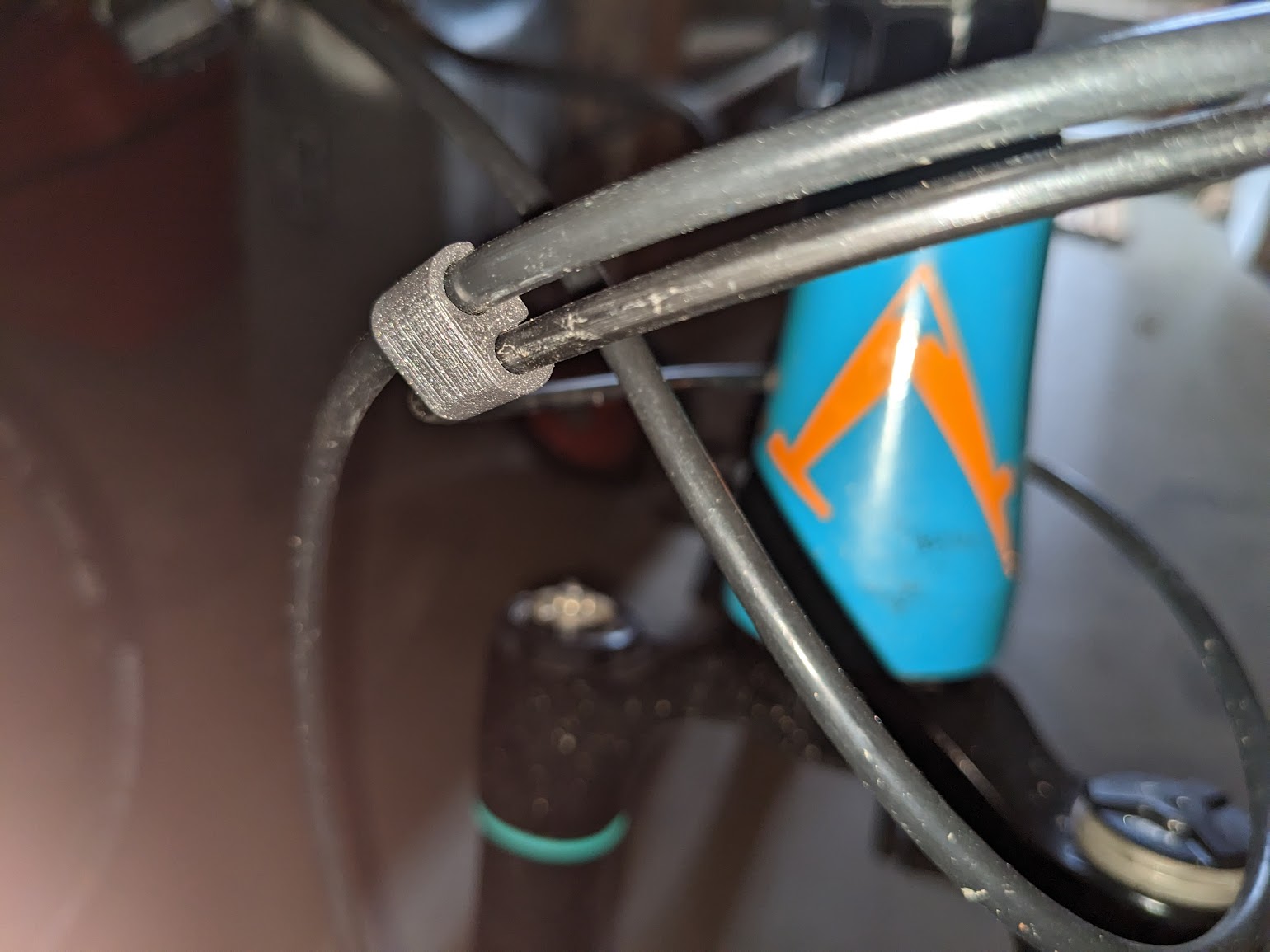
3. **The Specific Defect: Ruptured Rear Brake Hose**
At the core of this widespread recall is a specific mechanical vulnerability within the braking system: a defect in the flexible brake hose located in the cars’ rear brake system. Recall documents explicitly state that this hose can rupture, leading to a critical leakage of brake fluid. This rupture compromises the integrity of the hydraulic braking system, which relies on pressurized fluid to transmit force from the brake pedal to the brake calipers.
When this flexible brake hose develops a leak, the immediate consequence is a decrease in brake performance. The loss of brake fluid means that the hydraulic pressure required for effective braking cannot be maintained, resulting in reduced stopping power and an increase in the distance needed to bring the vehicle to a halt. As Ford itself has emphasized, such a reduction in brake performance significantly heightens the chance of a crash, making this a serious safety hazard.
Ford has been actively investigating the underlying causes of these rear brake hose leaks. While the “root cause of rear brake hose leaks has not been fully determined to date,” the company did observe a significant improvement after implementing a material change. Specifically, Ford noted “a significantly reduced rate of repair after the introduction of a robustness improvement change to the hose’s inner and outer braid material from Polyvinyl Alcohol (PVA) to Polyethylene Terephthalate (PET) in December 2017.”
This material change indicates that the composition of the brake hose itself played a role in its susceptibility to rupture. The recalled brake hoses, those prone to failure, were initially installed in the affected vehicles starting in November 2014. Production of these particular hoses ceased in December 2017, coinciding with the introduction of the improved material. This timeframe is crucial for understanding why only specific model years are implicated in the current recall.
Read more about: More Than Just a Chassis: Uncovering 11 Catastrophic Design Flaws That Defined Automotive Infamy
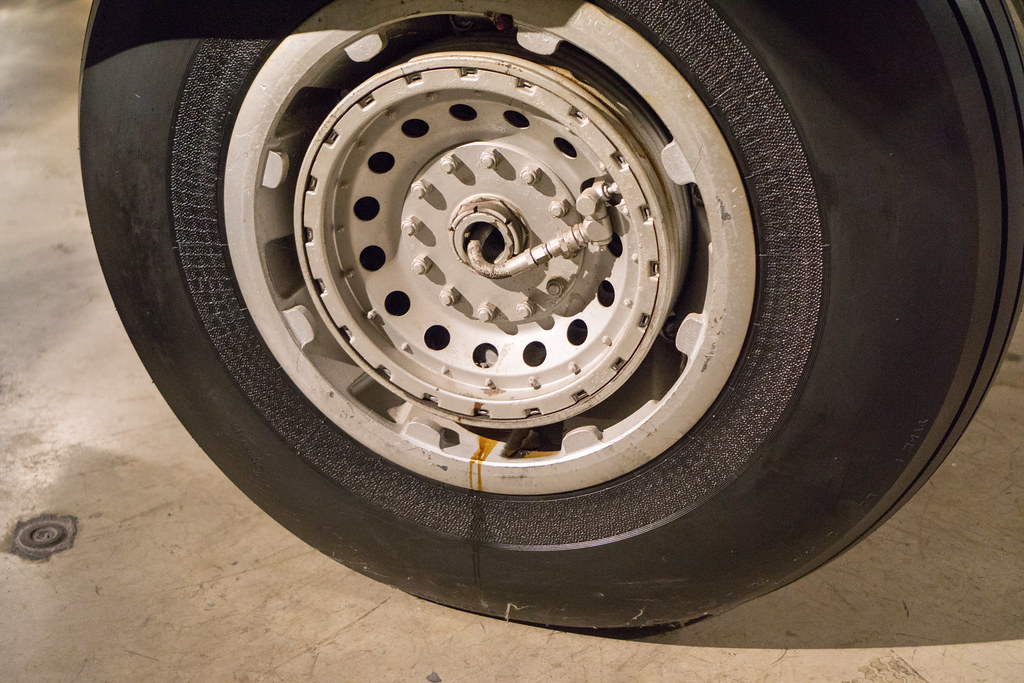
4. **Symptoms and Warnings for Drivers**
For vehicle owners, recognizing the signs of a potential brake fluid leak is paramount to mitigating risk. One of the most critical indicators provided by Ford is the illumination of a specific warning light on the dashboard. The company states that “If the brake fluid level in the master cylinder reservoir becomes low, the red brake fluid warning indicator light will illuminate.” This red light serves as a clear and urgent signal that the brake system is compromised and requires immediate attention.
Therefore, a driver’s vigilance regarding dashboard warning lights is essential. “A driver should watch for a red brake warning light in case too much brake fluid leaks,” acting as a first line of defense against the worsening of the problem. This light is designed to provide an early alert, prompting the driver to investigate the issue before it escalates to a more dangerous level of brake performance reduction.
Beyond the warning light, owners of the affected vehicles have reported other tangible symptoms that indicate a potential rear brake jounce hose leak. These reports, which were communicated to Ford and the NHTSA, include instances of the red brake warning lights illuminating in the instrument panels. Furthermore, drivers have noted a “long brake pedal travel,” meaning the brake pedal needs to be pushed down much further than normal to engage the brakes.
Another concerning symptom reported by some owners is an “allegation of reduced brake performance.” This directly correlates with Ford’s warning about increased stopping distances. Any experience of these symptoms – a red brake warning light, a brake pedal that feels spongy or requires excessive travel, or a noticeable decrease in the vehicle’s ability to stop – should be taken very seriously and prompt the driver to seek professional inspection immediately. Ignoring these warnings could lead to perilous situations on the road.
Read more about: Beyond the Blink: How a Ford Camera Glitch Uncovers Systemic Engineering Failures and the Lingering Shadows of Automotive Design Mistakes
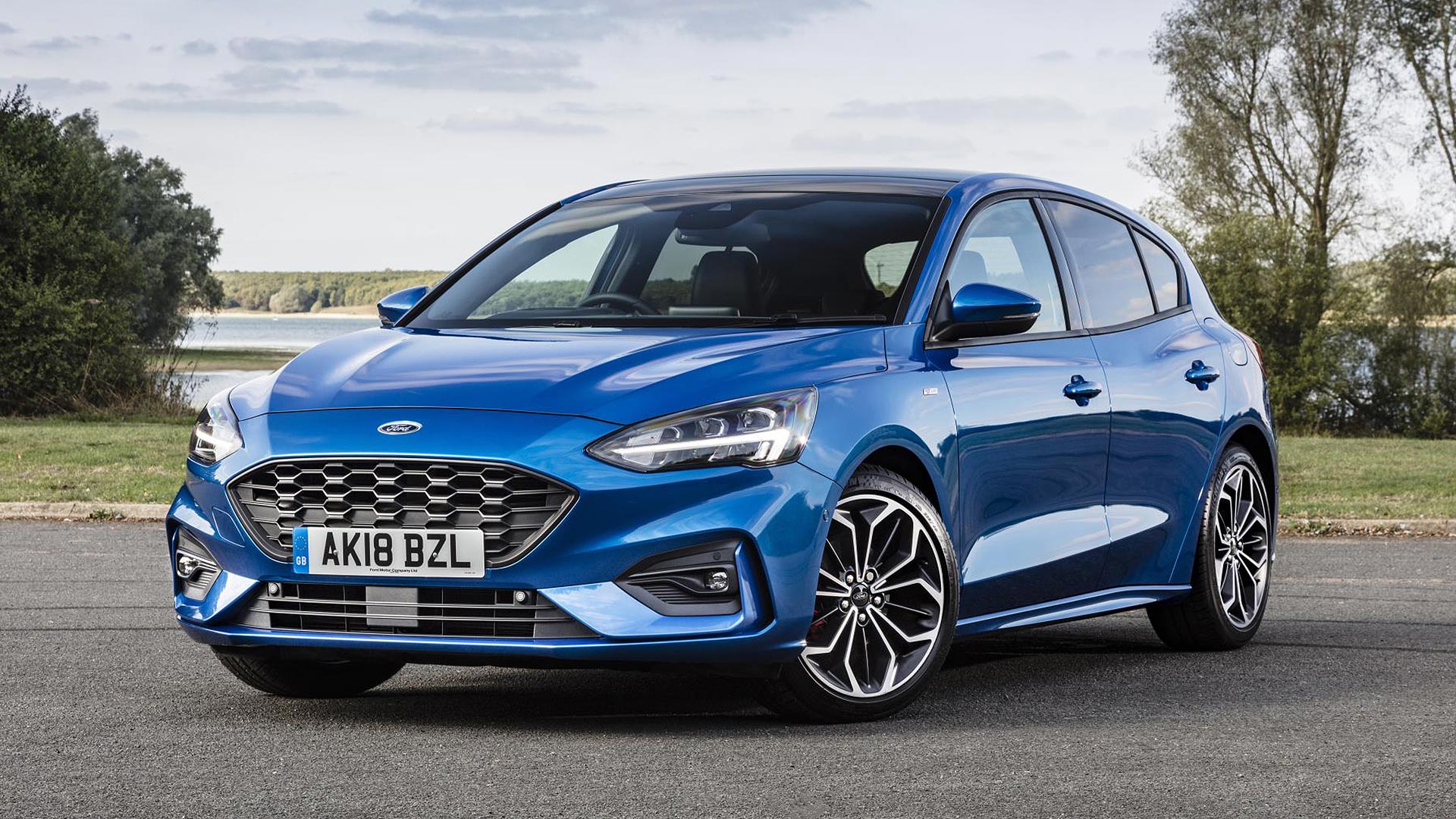
5. **Ford’s Initial Response and Notification Timeline**
Ford has outlined a clear plan for notifying affected vehicle owners about this critical safety risk. The automaker stated its intention to begin informing owners of the potential brake fluid leak issue in early September. This initial communication is designed to alert individuals whose 2016-2018 Lincoln MKX and 2015-2018 Ford Edge SUVs may be equipped with the defective rear brake hoses.
More specifically, Ford and Lincoln brake hose recall letters are scheduled to be mailed to owners between September 8 and September 12, 2025. These letters will serve as the formal notification of the recall and provide initial guidance to vehicle owners. It is crucial for recipients to understand that these first notices are considered “interim notices,” meaning they are part of an ongoing process.
The reason these are interim notices is that Ford is still actively developing a permanent repair for the issue. Therefore, the initial communication will inform owners about the risk and the recall process, but it will not yet include instructions for the final fix. This phased approach is common in complex recalls where the remedy requires further engineering and testing to ensure effectiveness and safety.
For Lincoln MKX and Ford Edge owners seeking immediate information or clarification, Ford has provided direct contact channels. Owners may reach out to Ford at the dedicated phone number 866-436-7332 and reference brake jounce hose recall number 25S87. Additionally, consumers can utilize Ford’s recall support website or contact their local Ford dealership for assistance and to determine if their specific vehicle is included in this safety campaign.
Car Model Information: 2018 Ford Edge SEL
Name: Ford Edge
Caption: 2019 Ford Edge SEL EcoBoost AWD (US)
Manufacturer: Ford Motor Company
Production: 2006–present
ModelYears: 2007–2024 (CAN/US),2016–2021 (Europe),2015–2019 (UK)
Class: Mid-size crossover SUV
BodyStyle: SUV
Layout: Front-engine, front-wheel-drive layout
Categories: 2010s cars, 2020s cars, All-wheel-drive vehicles, All articles with unsourced statements, Articles with short description
Summary: The Ford Edge is a crossover SUV manufactured and marketed by the Ford Motor Company introduced for the 2007 model year as the first mid-size CUV marketed by Ford in North America. Deriving its name from a trim package of the Ford Ranger, the Ford Edge is positioned between the Ford Escape and the Ford Explorer within the Ford product line.
Production of the North American Edge ended in April 2024, with the third generation Edge (dubbed the Edge L), launched in 2023, being produced and sold exclusively in China.
Sharing its underpinnings with the Ford Fusion sedan, Ford also marketed a rebadged variant as the Lincoln MKX (since 2019, the Lincoln Nautilus). The second generation is also marketed by Ford of Europe, positioned between the Kuga (Escape) and the Explorer PHEV.
Manufacturing of the first two generations took place at Oakville Assembly (Oakville, Ontario) alongside the Nautilus.
Get more information about: Ford Edge
Buying a high-performing used car >>>
Brand: Ford Model: Edge
Price: $11,480 Mileage: 102,923 mi.
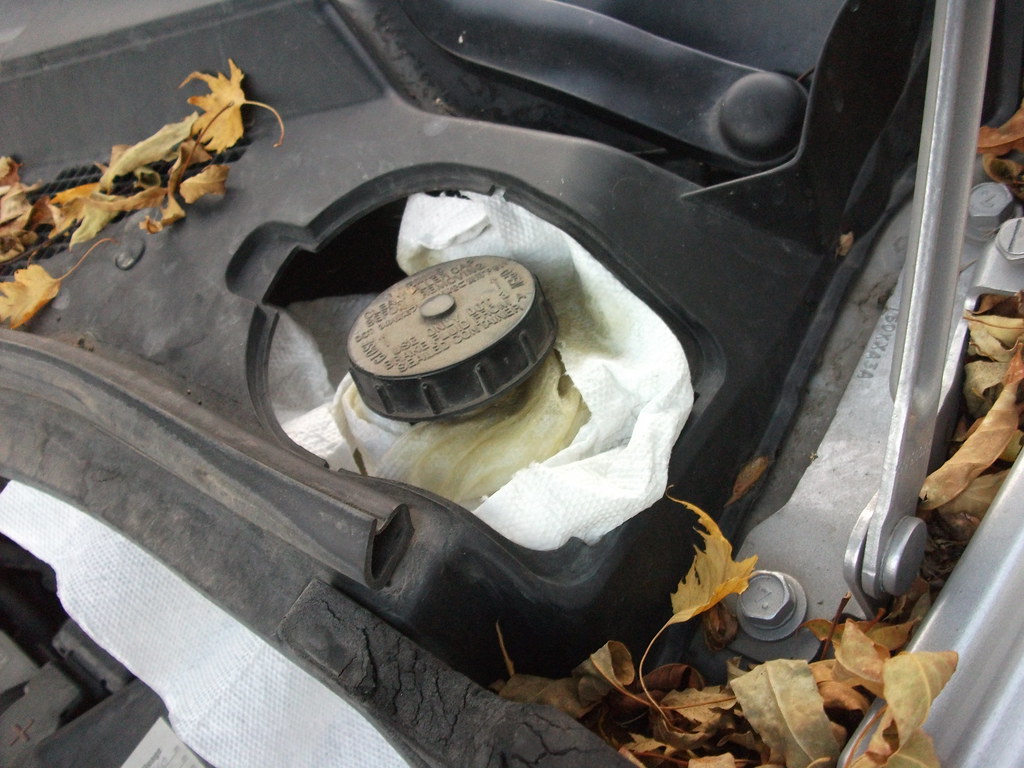
6. **The Under-Development Remedy and Expected Availability**
While Ford has initiated the notification process for affected vehicle owners, the definitive solution to the brake fluid leak problem is still in progress. The company has explicitly stated that “The remedy for the issue is still under development and is expected to be available in April.” This indicates a period of continued engineering and testing to ensure that the proposed fix effectively resolves the defect and restores the braking system to its intended safety standards.
The timeline for the final repair means that owners will receive a second, follow-up notification once the remedy becomes available. These “Second brake hose recall letters should be mailed between April 1 and April 3, 2026.” This subsequent communication will contain the necessary instructions for owners to schedule their vehicle for the repair at an authorized dealership, free of charge.
Ford’s ongoing efforts include continuous investigation into the underlying causes of the brake hose failures. The company acknowledges that “The root cause of rear brake hose leaks has not been fully determined to date,” despite earlier observations about material changes reducing repair rates. This candid admission highlights the complexity of the engineering challenge and Ford’s commitment to fully understanding and permanently addressing the issue.
Given that the remedy is several months away, owners are advised to remain vigilant for the warning signs of a brake fluid leak as outlined previously. While waiting for the permanent fix, any indications of reduced brake performance or the illumination of the red brake warning light should prompt immediate contact with a Ford dealership for inspection and advice. Ford aims to provide a robust and lasting solution to safeguard its customers.

7. **Broader Context: Ford’s Recent String of Recalls**
This recall of Edge and Lincoln MKX SUVs for brake fluid leaks is not an isolated incident but rather part of a broader pattern of vehicle recalls issued by Ford this year. The notices concerning these SUVs and other recent safety alerts contribute to what has been described as a “string of vehicle recalls Ford has issued this year,” positioning the automaker as having the highest number of recalls out of any manufacturer.
According to data from the National Highway Traffic Safety Administration (NHTSA), Ford has notably accounted for “39% of 2025’s recalls so far,” surpassing all other manufacturers in the volume of safety campaigns. This significant proportion underscores a period of intensified scrutiny and necessary corrective actions for the company. The sheer number is further highlighted by the fact that Ford has issued “at least 105” recalls this year, based on NHTSA data.
The nature of these recalls spans various vehicle systems. Analysis of Ford’s recalls reveals that “Electrical system problems account for the highest number of Ford’s recalls (23)” in the current year. Following electrical issues, “backover prevention recalls (14) and power train recalls (11)” represent the next most frequent categories, indicating diverse areas of concern across different vehicle components and functionalities.
Beyond the brake fluid leak, another recent example includes a recall affecting more than 312,000 vehicles, such as F-150, Ranger, Expedition, Bronco, and Lincoln Navigator models. This particular recall was initiated due to a defect identified in the electronic power brake assist system. This continuous series of safety alerts reflects Ford’s intensive strategy to quickly identify and rectify hardware and software issues, aiming to protect its customer base, as articulated by the company’s Chief Operating Officer. This commitment to safety, though leading to numerous recalls, is presented as a proactive measure to address potential risks effectively.
Beyond the significant brake fluid leak recall, Ford also recently issued a separate, yet equally important, safety alert concerning instrument panel display failures in a substantial number of its pickup trucks. This additional recall highlights the diverse range of issues Ford is actively addressing to ensure vehicle safety and functionality. Understanding the details of this separate recall provides a fuller picture of the automaker’s ongoing commitment to consumer protection.
Car Model Information: 2018 Ford Edge SEL
Name: Ford Edge
Caption: 2019 Ford Edge SEL EcoBoost AWD (US)
Manufacturer: Ford Motor Company
Production: 2006–present
ModelYears: 2007–2024 (CAN/US),2016–2021 (Europe),2015–2019 (UK)
Class: Mid-size crossover SUV
BodyStyle: SUV
Layout: Front-engine, front-wheel-drive layout
Categories: 2010s cars, 2020s cars, All-wheel-drive vehicles, All articles with unsourced statements, Articles with short description
Summary: The Ford Edge is a crossover SUV manufactured and marketed by the Ford Motor Company introduced for the 2007 model year as the first mid-size CUV marketed by Ford in North America. Deriving its name from a trim package of the Ford Ranger, the Ford Edge is positioned between the Ford Escape and the Ford Explorer within the Ford product line.
Production of the North American Edge ended in April 2024, with the third generation Edge (dubbed the Edge L), launched in 2023, being produced and sold exclusively in China.
Sharing its underpinnings with the Ford Fusion sedan, Ford also marketed a rebadged variant as the Lincoln MKX (since 2019, the Lincoln Nautilus). The second generation is also marketed by Ford of Europe, positioned between the Kuga (Escape) and the Explorer PHEV.
Manufacturing of the first two generations took place at Oakville Assembly (Oakville, Ontario) alongside the Nautilus.
Get more information about: Ford Edge
Buying a high-performing used car >>>
Brand: Ford Model: Edge
Price: $11,480 Mileage: 102,923 mi.
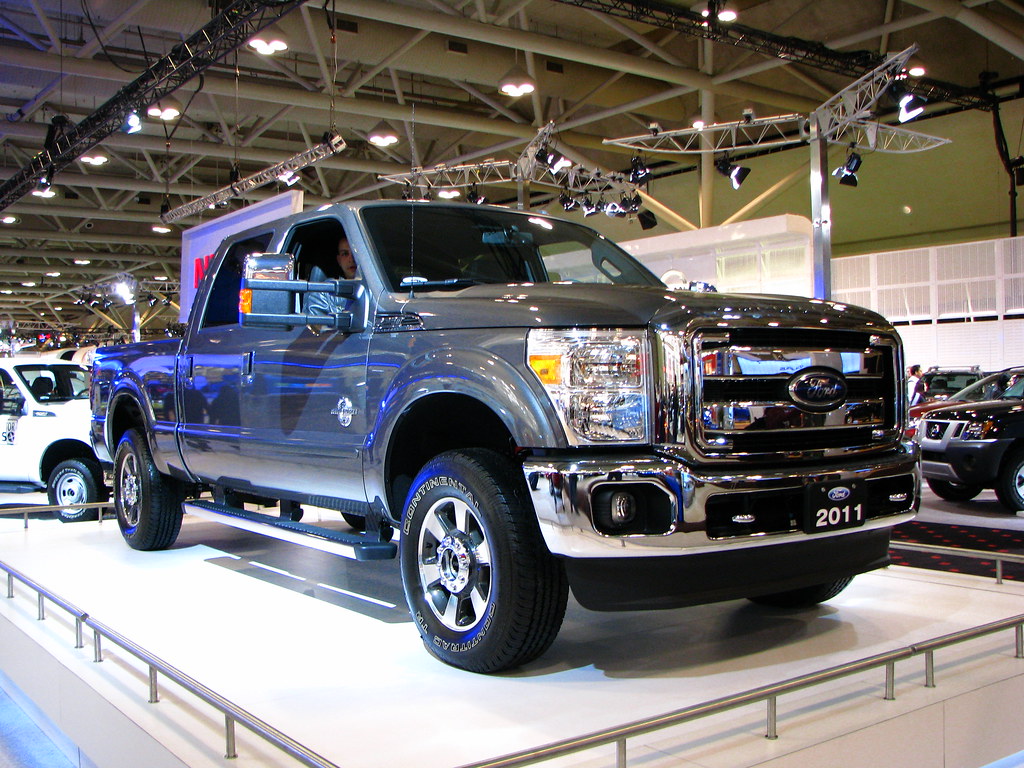
8. **The Separate Instrument Panel Display Recall**
Ford initiated a separate recall impacting more than 355,000 pickup trucks due to a critical instrument panel display failure. This issue, distinct from the brake fluid leak, poses its own significant risks to driver safety by potentially obscuring vital operational information. Such failures are of serious concern, as they can directly impede a driver’s ability to operate the vehicle safely.
According to the National Highway Traffic Safety Administration (NHTSA), “An instrument panel display that does not show critical information, such as warning lights or vehicle speed, increases the risk of a crash.” This means drivers might be unaware of their current speed, fuel levels, or crucial warning indicators, creating dangerous conditions on the road. The absence of such data can lead to impaired judgment and increased accident potential.
The instrument panel display failures at startup apply to a range of Ford truck models. Specifically, the recall affects 2025 F-150 vehicles, alongside 2025 and 2026 models of the F-550 Super Duty, F-450 Super Duty, F-350 Super Duty, and the F-250 Super Duty. This broad coverage across different F-Series trucks underscores the widespread nature of the software or hardware glitch causing the display malfunction.
Fortunately, the remedy for this particular instrument panel issue is more readily available than the brake hose fix. The NHTSA reported that the instrument panel cluster can be corrected by dealers or through over-the-air updates, all free of charge to the owners. This dual approach offers flexibility and convenience for truck owners to have the necessary repair performed promptly, minimizing disruption to their daily routines.
Car Model Information: 2023 Honda Accord LX
Name: Ford F-Series
Caption: 2022 Ford F-150 Lariat Luxury
Manufacturer: Ford Motor Company
Aka: Ford Lobo (Mexico, 1992–present)
Production: 1948–present
Class: Pickup truck#Full-size pickup truck
Layout: Front-engine, rear-wheel-drive layout,rear-wheel drive
Predecessor: 1941 Ford
Categories: All-wheel-drive vehicles, All Wikipedia articles written in American English, All articles that may contain original research, All articles with unsourced statements, Articles that may contain original research from September 2020
Summary: The Ford F-Series is a series of light-duty trucks marketed and manufactured by the Ford Motor Company since model year 1948 as a range of full-sized pickup trucks — positioned between Ford’s Ranger and Super Duty pickup trucks. Alongside the F-150 (introduced in 1975), the F-Series also includes the Super Duty series (introduced in 1999), which includes the heavier-duty F-250 through F-450 pickups, F-450/F-550 chassis cabs, and F-600/F-650/F-750 Class 6–8 commercial trucks.
Get more information about: Ford F-Series
Buying a high-performing used car >>>
Brand: Ford Model: pickup trucks
Price: $25,677 Mileage: 15,933 mi.
Read more about: Navigating the New Car Market: 12 Models Experts Rate as Least Reliable
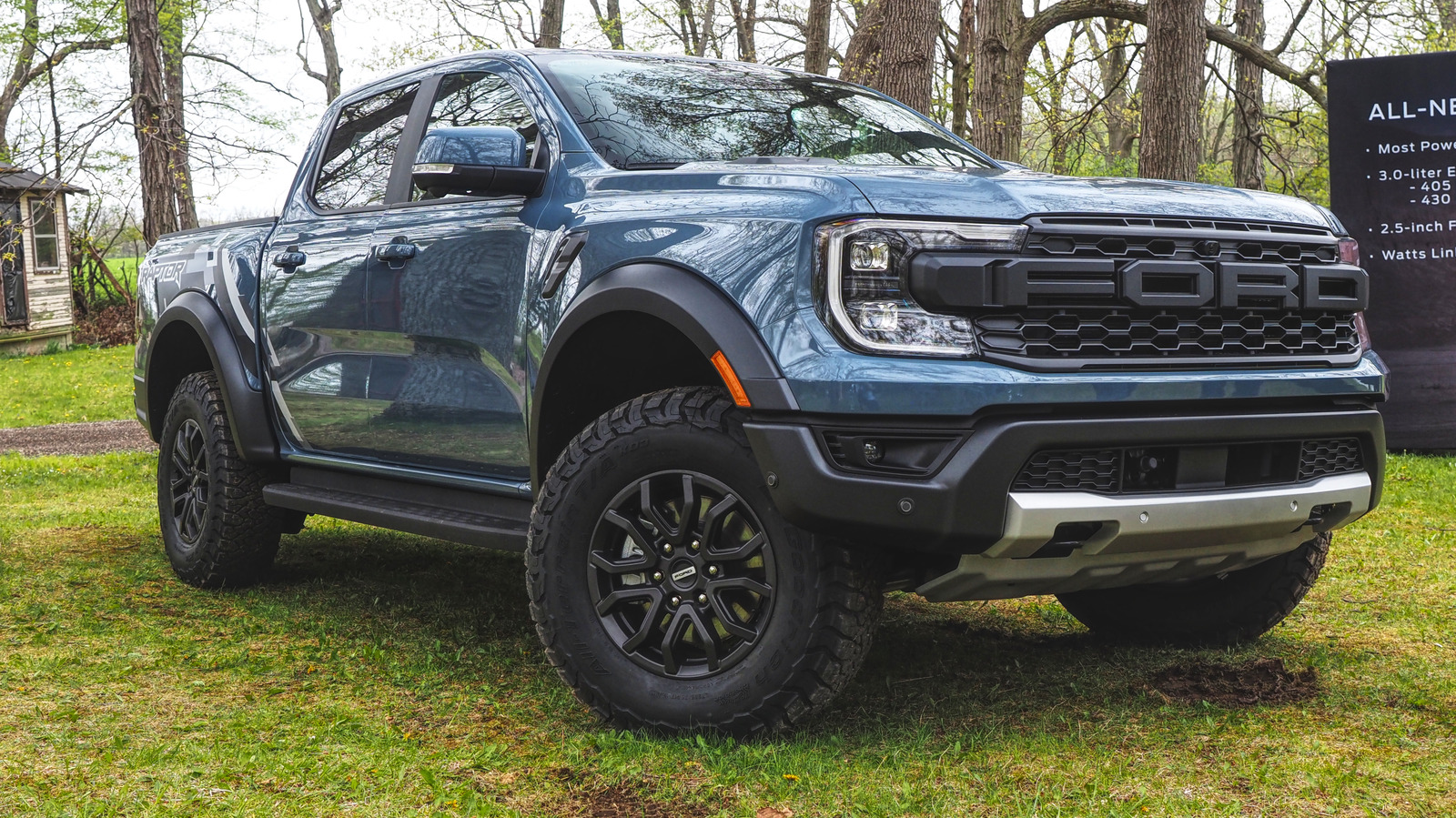
9. **Ford’s Overarching Strategy for Addressing Safety Issues**
The series of recalls, including both the brake fluid leak and the instrument panel display failure, reflects Ford’s intensive and proactive approach to vehicle safety. Ford Chief Operating Officer Kumar Galhotra has publicly addressed the increase in recalls, framing it as an integral part of the company’s strategy to safeguard its customer base. This strategy emphasizes rapid identification and rectification of potential problems.
In a July 16 blog post, Galhotra stated, “The increase in recalls reflects our intensive strategy to quickly find and fix hardware and software issues and go the extra mile to help protect customers.” This declaration indicates a fundamental shift towards heightened vigilance and an engineering philosophy focused on identifying vulnerabilities before they lead to severe consequences for vehicle owners.
To support this enhanced safety initiative, Ford has significantly invested in its technical expertise and testing capabilities. Galhotra noted that “Ford has more than doubled its team of safety and technical experts in the past two years.” This expansion of human capital provides the necessary resources to conduct thorough investigations into reported issues and develop robust solutions.
Furthermore, Ford has “significantly increased testing to failure on critical systems in current Ford vehicles such as powertrains, steering and braking.” This rigorous testing regimen allows engineers to push components to their limits, uncover potential weaknesses, and incorporate these “Insights from this testing…into current production.” Such a commitment to continuous improvement aims to enhance the long-term reliability and safety of Ford vehicles.
Read more about: Buyer Beware: 14 SUVs That Could Drain Your Wallet with Costly Repairs

10. **Essential Consumer Advice and the Importance of Vigilance**
In light of these ongoing recalls, expert advice for consumers is clear: attention to recall notices is not merely recommended, but absolutely essential. Automotive expert Shaun Carse underscored this point, telling CBS MoneyWatch that “a recall notice isn’t junk mail — it’s basically your car writing you a doctor’s note. Bin it, and you’re just asking for trouble.” This powerful analogy highlights the critical nature of these communications for vehicle owners.
Owners of affected Ford Edge and Lincoln MKX SUVs, as well as Ford truck owners impacted by the instrument panel recall, must take immediate action to determine if their specific vehicle is included. Ford provides accessible resources, such as its recall support website, where individuals can input their Vehicle Identification Number (VIN) to check for active recalls. Utilizing these tools is the first step in ensuring personal and passenger safety.
While waiting for the brake fluid leak remedy, which is still under development, continued vigilance for warning signs is paramount. Drivers should remain acutely aware of any changes in brake pedal feel, such as increased travel, and diligently monitor their dashboard for the illumination of the red brake fluid warning indicator light. Any observation of these symptoms warrants immediate contact with a Ford dealership for inspection and guidance.
Shaun Carse also touched upon the broader implications for Ford’s reputation, stating, “The real test will be how fast Ford fixes this and how much confidence they can rebuild with drivers. If they play it right, they can turn a PR nightmare into a story of accountability.” For consumers, this translates into an expectation of timely and effective resolutions, reinforcing the trust placed in the brand.
Read more about: Consumer Notice: These 9 Used Bicycles Become Frame Crackers Once They Hit 10000 Kilometers
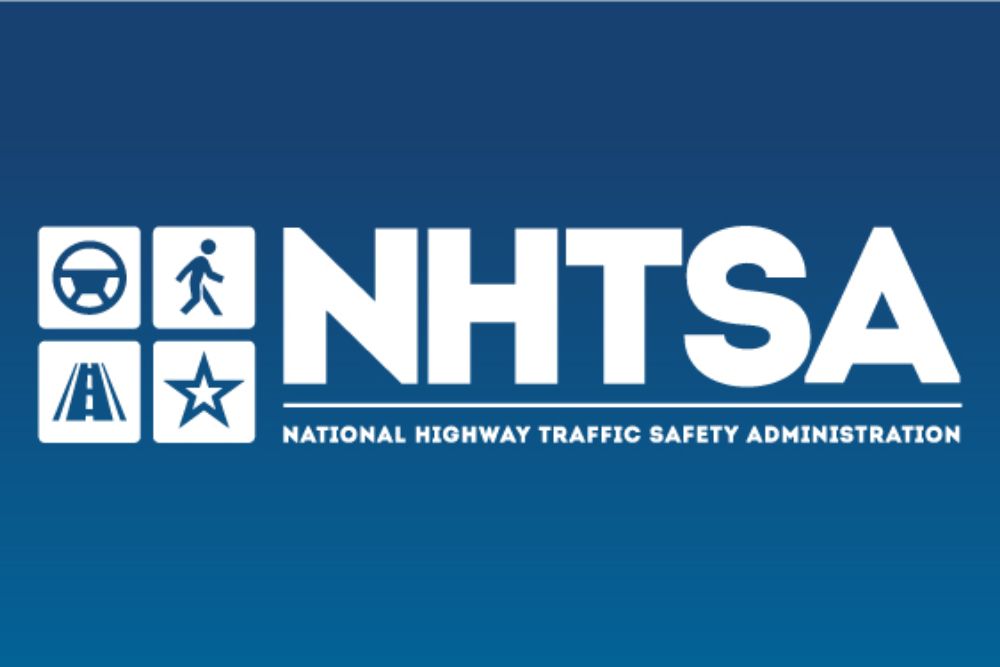
11. **The Federal Investigation: NHTSA’s Scrutiny of Brake Failures**
The path to the current widespread brake fluid leak recall was not straightforward, involving significant oversight and intervention from federal safety regulators. The National Highway Traffic Safety Administration (NHTSA) first contacted Ford about rear brake jounce hose leaks on 2016-2017 Edge vehicles in March 2021. This initial outreach stemmed from owner complaints detailing issues like red brake warning lights and extended brake pedal travel.
At that time, owners reported specific symptoms that mirrored the concerns now at the forefront of the recall. These included “red brake warning lights in the instrument panels and/or a long brake pedal travel,” along with “one allegation of reduced brake performance.” Despite these early indicators and owner feedback, Ford’s initial assessment led them to a different conclusion regarding the severity and trend of the problem.
Ford stated that it “didn’t find any evidence of a trend” following the NHTSA’s initial inquiry. This interpretation of the data led the automaker to close its internal investigation in September 2024, concluding that there was no “unreasonable risk to motor vehicle safety.” This decision was based on internal findings that Ford believed mitigated the potential dangers.
However, federal safety regulators did not concur with Ford’s assessment. The NHTSA evidently “didn’t see things the same way” as Ford, leading them to take a more direct and assertive step. Following Ford’s closure of its investigation, the NHTSA formally “opened a federal investigation into brake failures in 2015-2017 Ford Edge SUVs,” signaling a clear divergence of opinion regarding the safety implications.
Car Model Information: 2018 Ford Edge SEL
Name: Ford Edge
Caption: 2019 Ford Edge SEL EcoBoost AWD (US)
Manufacturer: Ford Motor Company
Production: 2006–present
ModelYears: 2007–2024 (CAN/US),2016–2021 (Europe),2015–2019 (UK)
Class: Mid-size crossover SUV
BodyStyle: SUV
Layout: Front-engine, front-wheel-drive layout
Categories: 2010s cars, 2020s cars, All-wheel-drive vehicles, All articles with unsourced statements, Articles with short description
Summary: The Ford Edge is a crossover SUV manufactured and marketed by the Ford Motor Company introduced for the 2007 model year as the first mid-size CUV marketed by Ford in North America. Deriving its name from a trim package of the Ford Ranger, the Ford Edge is positioned between the Ford Escape and the Ford Explorer within the Ford product line.
Production of the North American Edge ended in April 2024, with the third generation Edge (dubbed the Edge L), launched in 2023, being produced and sold exclusively in China.
Sharing its underpinnings with the Ford Fusion sedan, Ford also marketed a rebadged variant as the Lincoln MKX (since 2019, the Lincoln Nautilus). The second generation is also marketed by Ford of Europe, positioned between the Kuga (Escape) and the Explorer PHEV.
Manufacturing of the first two generations took place at Oakville Assembly (Oakville, Ontario) alongside the Nautilus.
Get more information about: Ford Edge
Buying a high-performing used car >>>
Brand: Ford Model: Edge
Price: $11,480 Mileage: 102,923 mi.

12. **Ford’s Rationale for Initially Closing the Investigation**
Ford’s decision in September 2024 to conclude its internal investigation without initiating a recall was based on several key findings that the company believed demonstrated a mitigated risk. These findings were presented as justifications for their determination that no “unreasonable risk to motor vehicle safety” existed at that time. Understanding these points offers insight into Ford’s initial assessment of the issue.
One of the primary assurances Ford cited was that “Customers would receive a red brake warning light before experiencing a reduction in rate of deceleration.” The illumination of this warning light was considered a sufficient early alert mechanism, providing drivers with advance notice of a potential problem before any significant decrease in braking effectiveness occurred. This suggests an assumption of driver responsiveness to dashboard indicators.
Furthermore, Ford highlighted a fundamental safety feature of its braking systems: “The braking system contains two isolated circuits so in the event of loss of brake fluid in one circuit the vehicle could be stopped with two of four brakes.” This design, intended as a fail-safe, was presented as a protective measure, ensuring that a complete loss of braking capability would not occur even if one circuit failed.
Finally, Ford’s analysis of internal data suggested that the issue was not escalating to a critical level. The company stated that “Current and projected occurrence rates were not interpreted as indicative of a defect trend.” This implies that the frequency of reported brake hose leaks, based on their data at the time, did not meet the internal thresholds for mandating a widespread safety recall. These three factors combined formed the basis of Ford’s initial decision.
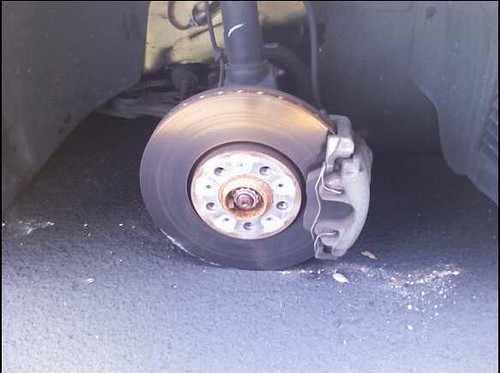
13. **Statistical Overview of Reported Incidents and Affected Vehicles**
While Ford initially concluded there was no trend, the accumulation of various reports eventually compelled a reevaluation and the subsequent recall. Ford’s internal records indicate a measurable number of incidents related to the rear brake jounce hose leaks that align with owner concerns and federal scrutiny. These statistics paint a clearer picture of the issue’s prevalence.
Specifically, Ford is aware of at least “64 warranty claims, 3 field reports, and 16 customer complaints related to rear brake jounce hose leaks.” These figures, representing formal documentation of issues, demonstrate that the problem was not an isolated anomaly but rather a recurring concern brought to the automaker’s attention through multiple channels.
Despite these reported incidents, it is important to note that Ford has confirmed “no crash or injury reports” have been directly linked to this particular brake fluid leak issue so far. This lack of severe consequences to date is a positive aspect, but it does not diminish the potential risk identified by the recall, which aims to prevent future incidents before they occur.
Regarding the scale of the defect within the recalled population, Ford “estimates about 1% of the recalled vehicles have defective brake hoses.” While this percentage might seem low, applied to nearly half a million vehicles, it still translates to thousands of potentially compromised braking systems. The recall’s reach also extends internationally, with “about 52,500 of the vehicles are recalled in Canada,” necessitating a coordinated safety effort across North America.

14. **The Path Forward: Rebuilding Confidence and Ensuring Accountability**
The current series of recalls, especially the significant brake fluid leak issue, presents a pivotal moment for Ford to reinforce its commitment to safety and customer trust. As automotive expert Shaun Carse aptly summarized, “The real test will be how fast Ford fixes this and how much confidence they can rebuild with drivers.” The speed and effectiveness of the remedy will be crucial in shaping public perception.
Ford has an opportunity to transform this challenging period into a narrative of responsibility and responsiveness. Carse’s observation that, “If they play it right, they can turn a PR nightmare into a story of accountability,” highlights the importance of transparent communication and decisive action. For vehicle owners, seeing tangible solutions implemented promptly is key to restoring faith in the brand.
The commitment articulated by Ford’s Chief Operating Officer, Kumar Galhotra, about the “intensive strategy to quickly find and fix hardware and software issues,” coupled with increased testing and expert teams, lays the groundwork for such accountability. This proactive approach, while leading to a higher number of recalls, is presented as a necessary step to protect customers and ensure the long-term integrity of their vehicles.
Ultimately, the responsibility for safety is a shared one. While Ford works diligently to develop and implement effective remedies, vehicle owners play an equally critical role by heeding recall notices, understanding potential symptoms, and taking prompt action. Staying informed and proactive is the most effective way for consumers to navigate these safety alerts and ensure their well-being on the road.
Read more about: Under the Microscope: Unraveling the NFL’s Most Contentious Referee Calls and the Mounting Demand for Accountability
The widespread Ford recall alert for Edge and Lincoln MKX SUVs, alongside the instrument panel recall for trucks, underscores the continuous evolution of vehicle safety standards and the ongoing commitment required from manufacturers to meet them. For every driver, the message is clear: prioritize awareness, act on safety notices, and utilize available resources to keep yourself and your loved ones safe. This detailed overview aims to empower you with the knowledge to make informed decisions about your vehicle’s safety.



